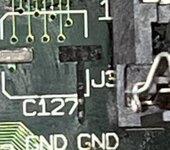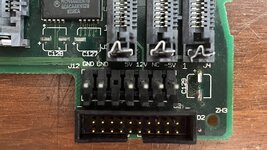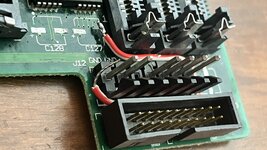D-50 Dude
Active member
I was removing capacitors in preparation for the new ones I ordered when I pulled up a trace. I was working by the Ram slots and didn’t want to use a lot of heat which was a mistake. I tore it up pretty badly too so I don’t know if it’ll be repairable, but I would be appreciative of any help. Thanks!




